NHLDec 22, 2016 by Sam Hitchcock
The New York Rangers' Possession Paradox
The New York Rangers' Possession Paradox
Right now, the NHL's most interesting paradox is the New York Rangers. The Blueshirts have a strong winning percentage and have experienced great postseason success under Alain Vigneault, but once again, their underlying metrics are unsettling.
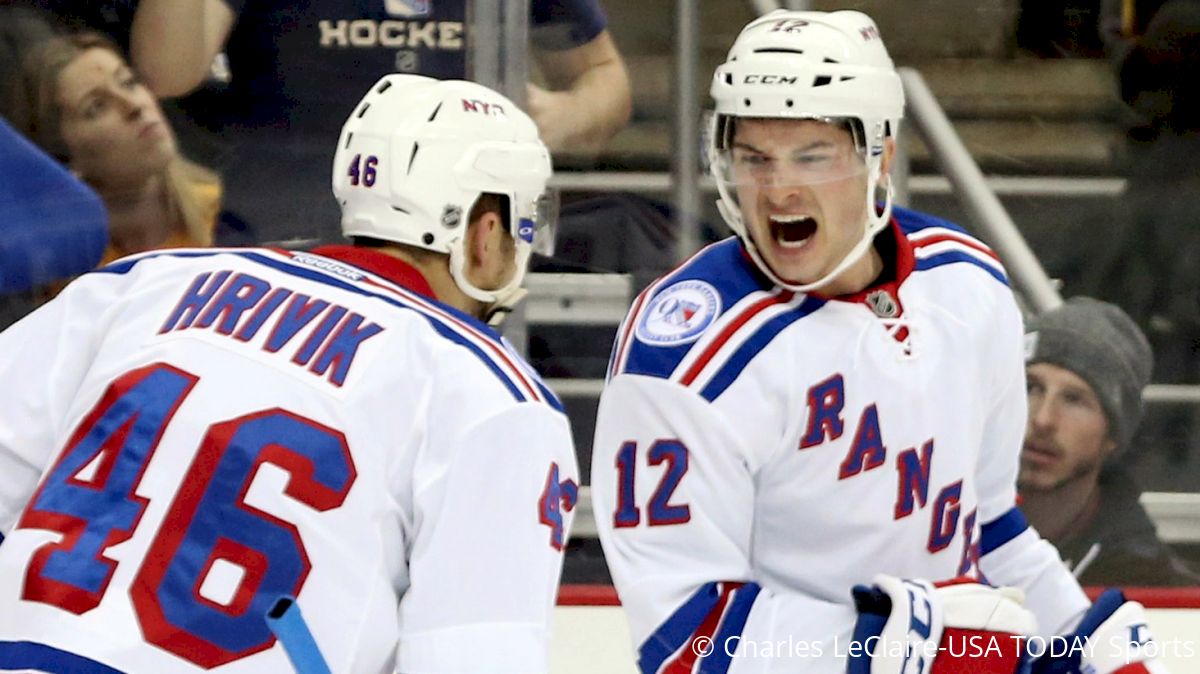
Life is full of paradoxes--many of which we will not live long enough to see resolved. But the NHL is reassuring. Its contradictions are typically explained once enough games are played. "We need a larger sample size" has become cliché, but that doesn't mean it's not true.
Right now, the NHL's most interesting paradox is the New York Rangers. The Blueshirts have a strong winning percentage and have experienced great postseason success under Alain Vigneault, but once again, their underlying metrics are unsettling.
This year, the Rangers rank 26th in Corsi for in 5v5 despite possessing 47 points (they are ranked 19th when adjusted to close-game situations), and yet they are leading the Eastern Conference. Their +38 goal differential is the best in the NHL. So what accounts for the success they have had in the first third of the season despite their poor possession metrics? Is it sustainable? And why are they so bad at controlling the shot-attempt battle?
They racked up 23 wins before anyone else by boasting a league-leading team shooting percentage in all situations and 5v5. At even-strength, the Rangers' shooting percentage is 9.69--nearly a point higher than that of the second-ranked Minnesota Wild.
What makes this interesting is the trend line. In 2014-15, the Rangers were third in the NHL in 5v5 shooting percentage. Last year, they were first. But both of those percentages were slightly below the 9% mark. Two weeks ago, they were firmly in double digits; the last time a team finished with a shooting percentage in the 10s was in 2012-13. An extremely prolific scoring clip doesn't happen often, and over the last handful of games, New York's shooting percentage has been coming down to earth. This last week, it fell by a point.
Sporadic puck luck
The candidates who will most influence the downtick in shooting percentage are Kevin Hayes, Michael Grabner, and Jimmy Vesey--three players with shooting percentages of 17 percent or higher. Scoring on one out of every six shots is comically high, so expect that to drop sharply over the next 50-plus games. Also, Rick Nash's shooting percentage was 8.2 last season, but currently it is 14.8. Regression is coming.
Clearly, the Rangers have had great puck luck, but in quick strikes. At 5v5, their shots per 60 minutes of ice time is 28th in the NHL. But their goal per 60 minutes is third best. At even strength, the Rangers rank 29th in the NHL in offensive-zone faceoff percentage and are third in defensive-zone faceoff percentage. They are not getting sufficient territorial time in the offensive zone to force draws. In their own end, they are chasing the puck too much and the opposing pressure causes them to take a lot of faceoffs around their net. These stats animate how much the Rangers struggle with possession, but not why. So what are the symptoms?
Teams that excel at winning the shot-attempt battle can consistently retrieve the puck against the Rangers. Losing races and battles for the puck leads to fatigue, so when New York does gain control of the puck they are turnover prone or fling the puck out of the zone. They tend to forfeit possession in order to move the puck away from their net. But chasing the puck is a nasty tendency. When mistakes happen, they need to stay patient. When they get hemmed in their zone, all five skaters need to work in concert; forwards should sink low and give defensemen a passing target or slash across the middle so they can direct pass it out. Maybe Lundqvist bailing New York out for so long has developed some unfortunate tendencies, but the inability to win at the territorial game is fatal come postseason.
Learning from last season's Stanley Cup champions
The regular season is all about developing good habits for the playoffs. The biggest takeaway from last season's Stanley Cup playoffs should have been that almost any professional hockey player can learn to play a good possession game. What was striking wasn't the efficacy of Sidney Crosby and Evgeni Malkin--those guys are superstars--but that Bryan Rust, Matt Cullen, Nick Bonino, Carl Hagelin, Ian Cole, and Justin Schultz were all important members of the Penguins' Cup-winning squad. Rust was an AHL player, and the rest had submitted large samples of mediocrity in previous stops with the Penguins.
But Penguins coach Mike Sullivan is a genius, and he had every player understanding his assignment in every situation. In addition to great communication, the level of execution was incredible. Each skater's comfort moving the puck in his own zone and the neutral zone was astonishing. Zone exits and resets were surgical. Every player knew where he was going with the puck before he received it, and rapid decision-making led to a remarkable pace. The Penguins were comfortable making four to six passes to leave the zone, because a good forecheck may result in the first and second breakout attempts failing. The Penguins' defensemen and forwards were comfortable swinging the puck around the defensive zone until a player had enough time and space to carry it out. This was true in the neutral zone as well. Every coach yearns for this kind of precision; Sullivan was just much better at having his players execute it.
All of this pertains to the Rangers for multiple reasons. The Rangers want to play fast and they want to spend as little time in the defensive zone as possible. But they are coming about it from the wrong angle. The Penguins are the template. More execution of the blueprint for how they exit their own zone will allow the Rangers to spend more time in the offensive zone and away from their own zone. And if the Rangers' skaters develop fluidity in the defensive zone and neutral zone, they can ratchet up the pace at which they play. But they need the puck to achieve this, and punting on possession when things get tough is setting the table for the opponent's attack.
The Penguins' Cup run reinforced the importance of one-and-dones. Spending as little time in your own zone leads to better possession metrics. It's that simple. So when an opponent misses a shot and the puck skitters toward the half-wall, a Rangers forward needs to get there before the opposing skater. And if he doesn't, he needs to disrupt the opponent's stick and disarm him.
Will the Rangers adapt under Vigneault?
A more calculated approach is called for on resets as well. In the neutral zone, skilled puck-handlers and passers like J.T. Miller, Kevin Hayes, and Zuccarello should get more opportunities for an individual effort at an entry via a drop pass at the far blue line. The best teams acquiesce to their creators; ripping through the structure of the neutral-zone defense puts opposing skaters on their heels. The team on the attack has its playmaker run a curl, shoot through the middle of the ice, and then move the puck forward, diagonal, lateral, or backward. He is the Queen on the chessboard.
These timed plays open up space for linemates and generate scoring chances off the rush. They are also difficult to defend because they often lead to a multi-layered attack, where a defenseman can stagger his entry into the zone so that he can come as a second wave. The Rangers are very capable of putting pressure on opponents' transition defenses. But they lack the composure in neutral-zone regroups to orchestrate a rush opportunity at a more deliberate pace.
One area that has always been a strength appears to be weakening: goaltending. It will not be surprising to anyone who has the slightest awareness of how aging affects a goaltender's performance that Henrik Lundqvist, at almost 35, may be ossifying. This has impacted his save percentage for most of the season so far, although he has been hot of late.
The Rangers have relied on Lundqvist to steal games for them in the past, and if he is unable to do that, they need to make his workload easier. They need to leverage their current strength: depth. They have a lot of capable players who can put the puck in the net and engineer offense through vision or finishing. They don't need to play run-and-gun to be successful; there is enough skill spread across the forward lines and defense that they can still flourish without a frenetic style of play.
Will the Rangers adapt under Vigneault? Probably not. They are winning through puck luck, depth, and above-average special teams. Teams that are experiencing success don't have as much incentive to be reflective. But that would be myopic. The Rangers need to embrace a more possession-centric strategy or else any dream of the Cup will slip through their grasp.
Right now, the NHL's most interesting paradox is the New York Rangers. The Blueshirts have a strong winning percentage and have experienced great postseason success under Alain Vigneault, but once again, their underlying metrics are unsettling.
This year, the Rangers rank 26th in Corsi for in 5v5 despite possessing 47 points (they are ranked 19th when adjusted to close-game situations), and yet they are leading the Eastern Conference. Their +38 goal differential is the best in the NHL. So what accounts for the success they have had in the first third of the season despite their poor possession metrics? Is it sustainable? And why are they so bad at controlling the shot-attempt battle?
They racked up 23 wins before anyone else by boasting a league-leading team shooting percentage in all situations and 5v5. At even-strength, the Rangers' shooting percentage is 9.69--nearly a point higher than that of the second-ranked Minnesota Wild.
What makes this interesting is the trend line. In 2014-15, the Rangers were third in the NHL in 5v5 shooting percentage. Last year, they were first. But both of those percentages were slightly below the 9% mark. Two weeks ago, they were firmly in double digits; the last time a team finished with a shooting percentage in the 10s was in 2012-13. An extremely prolific scoring clip doesn't happen often, and over the last handful of games, New York's shooting percentage has been coming down to earth. This last week, it fell by a point.
Sporadic puck luck
The candidates who will most influence the downtick in shooting percentage are Kevin Hayes, Michael Grabner, and Jimmy Vesey--three players with shooting percentages of 17 percent or higher. Scoring on one out of every six shots is comically high, so expect that to drop sharply over the next 50-plus games. Also, Rick Nash's shooting percentage was 8.2 last season, but currently it is 14.8. Regression is coming.
Clearly, the Rangers have had great puck luck, but in quick strikes. At 5v5, their shots per 60 minutes of ice time is 28th in the NHL. But their goal per 60 minutes is third best. At even strength, the Rangers rank 29th in the NHL in offensive-zone faceoff percentage and are third in defensive-zone faceoff percentage. They are not getting sufficient territorial time in the offensive zone to force draws. In their own end, they are chasing the puck too much and the opposing pressure causes them to take a lot of faceoffs around their net. These stats animate how much the Rangers struggle with possession, but not why. So what are the symptoms?
Teams that excel at winning the shot-attempt battle can consistently retrieve the puck against the Rangers. Losing races and battles for the puck leads to fatigue, so when New York does gain control of the puck they are turnover prone or fling the puck out of the zone. They tend to forfeit possession in order to move the puck away from their net. But chasing the puck is a nasty tendency. When mistakes happen, they need to stay patient. When they get hemmed in their zone, all five skaters need to work in concert; forwards should sink low and give defensemen a passing target or slash across the middle so they can direct pass it out. Maybe Lundqvist bailing New York out for so long has developed some unfortunate tendencies, but the inability to win at the territorial game is fatal come postseason.
Learning from last season's Stanley Cup champions
The regular season is all about developing good habits for the playoffs. The biggest takeaway from last season's Stanley Cup playoffs should have been that almost any professional hockey player can learn to play a good possession game. What was striking wasn't the efficacy of Sidney Crosby and Evgeni Malkin--those guys are superstars--but that Bryan Rust, Matt Cullen, Nick Bonino, Carl Hagelin, Ian Cole, and Justin Schultz were all important members of the Penguins' Cup-winning squad. Rust was an AHL player, and the rest had submitted large samples of mediocrity in previous stops with the Penguins. But Penguins coach Mike Sullivan is a genius, and he had every player understanding his assignment in every situation. In addition to great communication, the level of execution was incredible. Each skater's comfort moving the puck in his own zone and the neutral zone was astonishing. Zone exits and resets were surgical. Every player knew where he was going with the puck before he received it, and rapid decision-making led to a remarkable pace. The Penguins were comfortable making four to six passes to leave the zone, because a good forecheck may result in the first and second breakout attempts failing. The Penguins' defensemen and forwards were comfortable swinging the puck around the defensive zone until a player had enough time and space to carry it out. This was true in the neutral zone as well. Every coach yearns for this kind of precision; Sullivan was just much better at having his players execute it.
All of this pertains to the Rangers for multiple reasons. The Rangers want to play fast and they want to spend as little time in the defensive zone as possible. But they are coming about it from the wrong angle. The Penguins are the template. More execution of the blueprint for how they exit their own zone will allow the Rangers to spend more time in the offensive zone and away from their own zone. And if the Rangers' skaters develop fluidity in the defensive zone and neutral zone, they can ratchet up the pace at which they play. But they need the puck to achieve this, and punting on possession when things get tough is setting the table for the opponent's attack.
The Penguins' Cup run reinforced the importance of one-and-dones. Spending as little time in your own zone leads to better possession metrics. It's that simple. So when an opponent misses a shot and the puck skitters toward the half-wall, a Rangers forward needs to get there before the opposing skater. And if he doesn't, he needs to disrupt the opponent's stick and disarm him.
Will the Rangers adapt under Vigneault?
A more calculated approach is called for on resets as well. In the neutral zone, skilled puck-handlers and passers like J.T. Miller, Kevin Hayes, and Zuccarello should get more opportunities for an individual effort at an entry via a drop pass at the far blue line. The best teams acquiesce to their creators; ripping through the structure of the neutral-zone defense puts opposing skaters on their heels. The team on the attack has its playmaker run a curl, shoot through the middle of the ice, and then move the puck forward, diagonal, lateral, or backward. He is the Queen on the chessboard. These timed plays open up space for linemates and generate scoring chances off the rush. They are also difficult to defend because they often lead to a multi-layered attack, where a defenseman can stagger his entry into the zone so that he can come as a second wave. The Rangers are very capable of putting pressure on opponents' transition defenses. But they lack the composure in neutral-zone regroups to orchestrate a rush opportunity at a more deliberate pace.
One area that has always been a strength appears to be weakening: goaltending. It will not be surprising to anyone who has the slightest awareness of how aging affects a goaltender's performance that Henrik Lundqvist, at almost 35, may be ossifying. This has impacted his save percentage for most of the season so far, although he has been hot of late.
The Rangers have relied on Lundqvist to steal games for them in the past, and if he is unable to do that, they need to make his workload easier. They need to leverage their current strength: depth. They have a lot of capable players who can put the puck in the net and engineer offense through vision or finishing. They don't need to play run-and-gun to be successful; there is enough skill spread across the forward lines and defense that they can still flourish without a frenetic style of play.
Will the Rangers adapt under Vigneault? Probably not. They are winning through puck luck, depth, and above-average special teams. Teams that are experiencing success don't have as much incentive to be reflective. But that would be myopic. The Rangers need to embrace a more possession-centric strategy or else any dream of the Cup will slip through their grasp.
Related Content
 Cole Eiserman Eye's Gold Medal While Chasing Cole Caufield's Record
Cole Eiserman Eye's Gold Medal While Chasing Cole Caufield's RecordApr 25, 2024
 Replay: Home - 2024 Trois-Rivières vs Norfolk | Apr 24 @ 6 PM
Replay: Home - 2024 Trois-Rivières vs Norfolk | Apr 24 @ 6 PMApr 25, 2024
 Replay: Away - 2024 Penticton vs Vernon | Apr 24 @ 8 PM
Replay: Away - 2024 Penticton vs Vernon | Apr 24 @ 8 PMApr 25, 2024
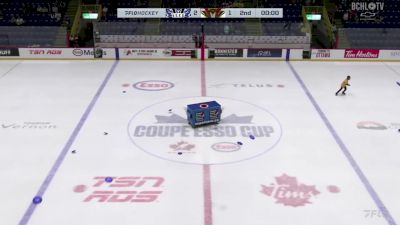 Replay: Home - 2024 Penticton vs Vernon | Apr 24 @ 8 PM
Replay: Home - 2024 Penticton vs Vernon | Apr 24 @ 8 PMApr 25, 2024
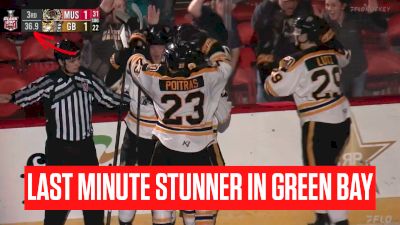 Jayson Shaugabay's Last-Minute Goal Extends Series For Green Bay Gamblers
Jayson Shaugabay's Last-Minute Goal Extends Series For Green Bay GamblersApr 25, 2024
 Replay: Away - 2024 Chilliwack vs Alberni Valley | Apr 24 @ 7 PM
Replay: Away - 2024 Chilliwack vs Alberni Valley | Apr 24 @ 7 PMApr 25, 2024
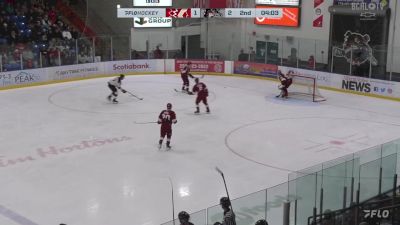 Replay: Home - 2024 Chilliwack vs Alberni Valley | Apr 24 @ 7 PM
Replay: Home - 2024 Chilliwack vs Alberni Valley | Apr 24 @ 7 PMApr 25, 2024
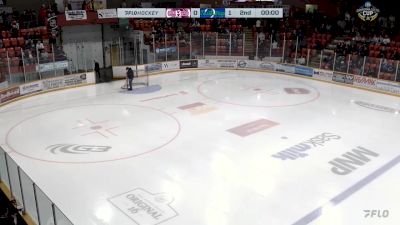 Replay: Home - 2024 Flin Flon vs Melfort | Apr 24 @ 7 PM
Replay: Home - 2024 Flin Flon vs Melfort | Apr 24 @ 7 PMApr 25, 2024
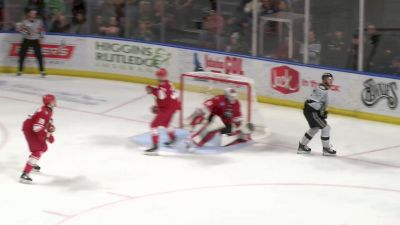 Replay: Away - 2024 Allen vs Idaho | Apr 24 @ 7 PM
Replay: Away - 2024 Allen vs Idaho | Apr 24 @ 7 PMApr 25, 2024